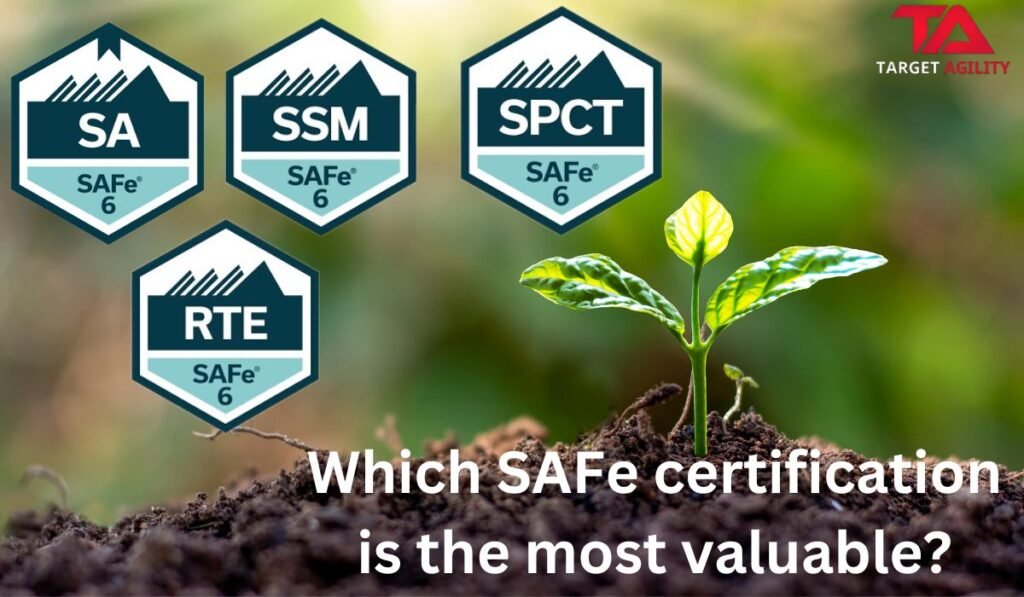Which SAFe certification is the most valuable?

SAFe certification, is a way of doing agile and lean practices on a large scale in organizations. It’s super popular, and a lot of people want to be certified in it. There are different SAFe certifications for different jobs or levels of experience. The one that’s most valuable for you depends on what you want to do in your career. SAFe Agilist (SA) This is the basic certification. It’s good if you’re new to SAFe or just want to get a general idea of how it works. In the course, you learn about SAFe values, principles, roles, and how to put SAFe into action. SAFe Scrum Master (SSM) If you’re a Scrum Master working in a SAFe environment, this certification is for you. It teaches you how to do Scrum in a SAFe way, coach Scrum teams, and make Scrum work for big organizations. SAFe Advanced Scrum Master (SASM) This one is for Scrum Masters who really know their stuff and want to be SAFe experts. You learn how to solve problems with Scrum, use Kanban and engineering practices, and help big groups of teams. SAFe Release Train Engineer (RTE) Release Train Engineers plan and do SAFe Release Trains. This certification teaches you how to plan and run them, handle dependencies, and make them work well. SAFe Program Consultant (SPC) If you’re a consultant helping companies use SAFe, this certification is for you. It covers how to figure out if a company is ready for SAFe, make a plan for it, train and coach teams, and keep track of how well it’s going. To choose the right one for you, think about your job and how much you know about SAFe. Here’s a quick guide: Hope this helps you figure out which SAFe certification is right for you!

